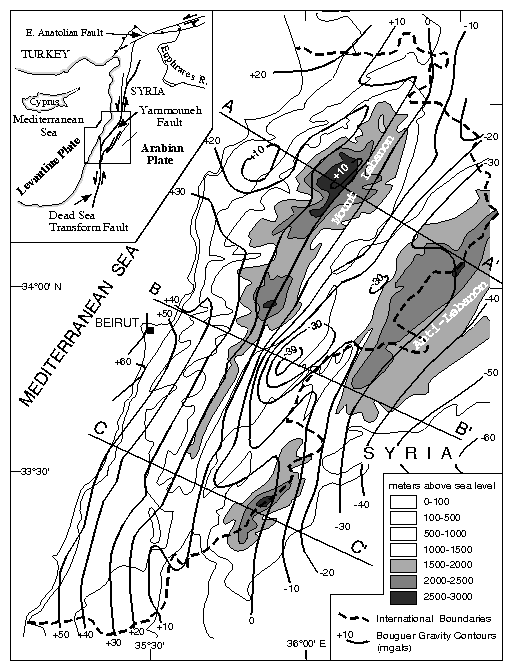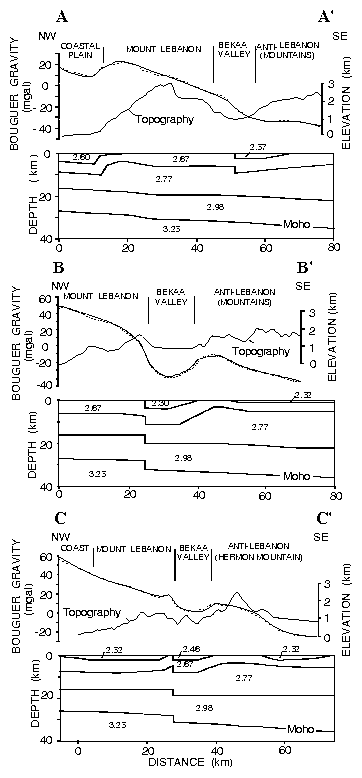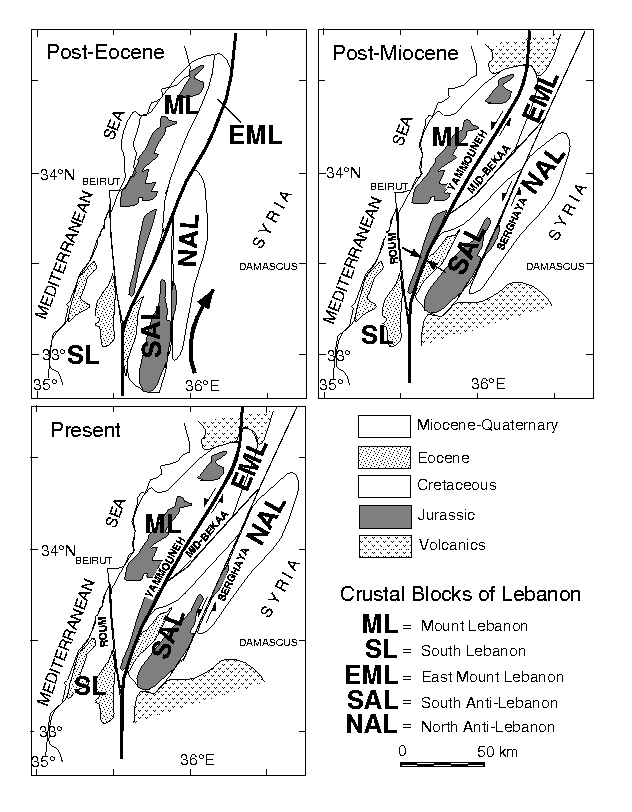Home | Results Summary | Publications | Participants | M.East / N.Africa Home
![]()
The northern extension of the Dead Sea transform fault in southern Lebanon bifurcates into several faults that cross Lebanon from south to north. The main strand, the Yammouneh fault, marks the boundary between the Levantine (eastern Mediterranean) and Arabian plates and separates the western mountain range (Mount Lebanon) from the eastern mountain range (Anti-Lebanon). Bouguer gravity contours of Lebanon approximately mimic topographic contours; i.e., positive Bouguer anomalies are associated with the Mount Lebanon and Anti-Lebanon ranges. This suggests that the region is not in simple isostatic compensation. Gravity observations based on 2.5-dimensional modeling and other available geologic and geophysical information have produced the following interpretations: (1) The crust of Lebanon thins from ~35 km beneath the Anti-Lebanon range, near the Syrian border, to ~27 km beneath the Lebanese coast. No crustal roots exist beneath the Lebanese ranges. (2) The depth to basement is ~3.5-6 km below sea level under the ranges and is ~8-10 km beneath the Bekaa depression. (3) The Yammouneh fault bifurcates northward into two branches, one that passes beneath the Yammouneh Lake through the eastern part of Mount Lebanon and another that bisects the northern part of the Bekaa Valley (i.e., Mid-Bekaa fault). The Lebanese mountain ranges and the Bekaa depression were formed as a result of transtension and later transpression associated with the relative motion of a few crustal blocks in response to the northward movement of the Arabian plate relative to the Levantine plate.
Figure 1. Map of Lebanon showing main topography, simplified Bouguer gravity contours of Tiberghien (1974), and location of cross sections A-A', B-B', and C-C'. Inset is regional map of northwestern Arabian plate. Box inside inset map indicates location of large map.

Figure 2. Crustal models based on modeling Bouguer gravity anomalies along profiles A-A', B-B', and C-C'. Exaggerated topography and observed (dotted line) and calculated (solid line) Bouguer gravity values are also shown. See Figure 1 for locations of profiles.

Figure 3. Simplified geologic-tectonic maps showing different crustal blocks and possible scenario for geologic evolution of Lebanon.

Go back to Summary of Results
Go back to Cornell Syria Project Welcome Page